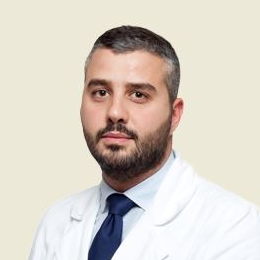Special Issue of the 29th Annual Meeting of the European Orthopaedic Research Society (EORS 2021)
A special issue of Applied Sciences (ISSN 2076-3417). This special issue belongs to the section "Biomedical Engineering".
Deadline for manuscript submissions: closed (31 December 2022) | Viewed by 3224

Special Issue Editors
Interests: spine biomechanics; intervertebral disc; sport medicine; knee; tissue regeneration; mesenchymal stem cells
Special Issues, Collections and Topics in MDPI journals
Interests: orthopedic surgery; adult reconstruction; sports medicine
Interests: spine; spine surgery; musculoskeletal system; orthopedic and trauma surgery; cartilage; osteoarthritis; joint reconstruction and replacement; tissue regeneration; stem cells
Special Issues, Collections and Topics in MDPI journals
Interests: osteoarthritis; knee surgery; hip surgery; total hip reconstruction; regenerative medicine
Special Issues, Collections and Topics in MDPI journals
Interests: spine; orthopedic and trauma surgery; sports medicine; joint replacement
Special Issues, Collections and Topics in MDPI journals
Special Issue Information
Dear Colleagues,
Orthopedics has been significantly affected by the introduction of new technologies and new materials.
The aim of this Special Issue is to cover the wide range of research lines developed by the members and collaborators of the European Orthopaedic Research Society (EORS) and other researchers within the field of Orthopedic research.
The main objective of the “Special Issue of the 29th Annual Meeting of the European Orthopaedic Research Society (EORS 2021)” is to publish outstanding papers presenting cutting-edge advances in the field of Orthopedics, promoting orthopedic and musculoskeletal research, including the fields of engineering, biology, and clinical research.
Indeed, the European Orthopaedic Research Society (EORS) has always had the aim to accelerate musculoskeletal discovery to improve health. The EORS 2021 Annual Meeting represents a reference point in the field of orthopedic and musculoskeletal research. Indeed, EORS 2021 provides a perfect forum to share knowledge and explore the latest trends in orthopedic science and surgery.
This Special Issue discusses current and future trends in the orthopedic field, highlighting the strengths and weaknesses and providing new intervention strategies offering the chance to leading scientists and researchers to advance treatments through innovation.
The main topics covered by this Special Issue are scientific contributions on the following research topics:
- Biomaterials;
- Arthroplasty;
- Biomechanics;
- Bone biology and pathophysiology;
- Hand and shoulder;
- Cartilage tissue engineering;
- Sports medicine;
- Trauma research;
- Knee arthroplasty;
- Orthopedic clinical research;
- Disc degeneration and regeneration;
- Trauma research;
- Biosurfaces for bone implants;
- 3D printing in orthopedic surgery;
- Trauma research;
- Tissue engineering;
- Shoulder arthroplasty;
- Spine;
- Robotics, navigation, and virtual reality.
It is our pleasure to invite members and professionals of EORS, academic institutions, and research centers from around the world to submit their contributions to this Special Issue.
Dr. Gianluca Vadalà
Dr. Biagio Zampogna
Dr. Fabrizio Russo
Prof. Dr. Rocco Papalia
Prof. Dr. Vincenzo Denaro
Guest Editors
Manuscript Submission Information
Manuscripts should be submitted online at www.mdpi.com by registering and logging in to this website. Once you are registered, click here to go to the submission form. Manuscripts can be submitted until the deadline. All submissions that pass pre-check are peer-reviewed. Accepted papers will be published continuously in the journal (as soon as accepted) and will be listed together on the special issue website. Research articles, review articles as well as short communications are invited. For planned papers, a title and short abstract (about 100 words) can be sent to the Editorial Office for announcement on this website.
Submitted manuscripts should not have been published previously, nor be under consideration for publication elsewhere (except conference proceedings papers). All manuscripts are thoroughly refereed through a single-blind peer-review process. A guide for authors and other relevant information for submission of manuscripts is available on the Instructions for Authors page. Applied Sciences is an international peer-reviewed open access semimonthly journal published by MDPI.
Please visit the Instructions for Authors page before submitting a manuscript. The Article Processing Charge (APC) for publication in this open access journal is 2400 CHF (Swiss Francs). Submitted papers should be well formatted and use good English. Authors may use MDPI's English editing service prior to publication or during author revisions.
Keywords
- biomaterials
- arthroplasty
- biomechanics
- bone biology and pathophysiology
- hand and shoulder
- cartilage tissue engineering
- sports medicine
- trauma research
- knee arthroplasty
- orthopedic clinical research
- disc degeneration and regeneration
- trauma research
- biosurfaces for bone implants
- 3D printing in orthopedic surgery
- trauma research
- tissue engineering
- shoulder arthroplasty
- spine
- robotics, navigation, and virtual reality









